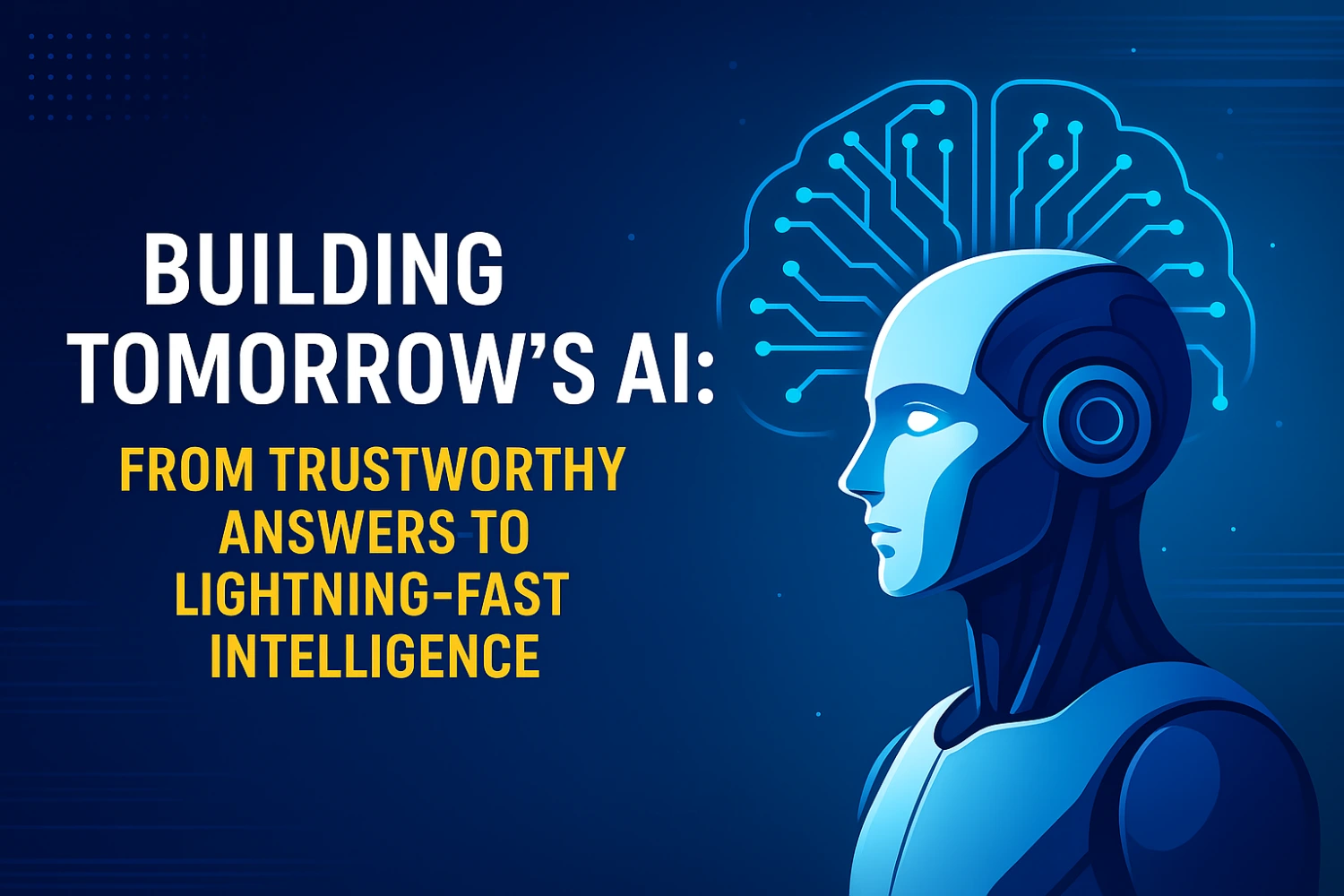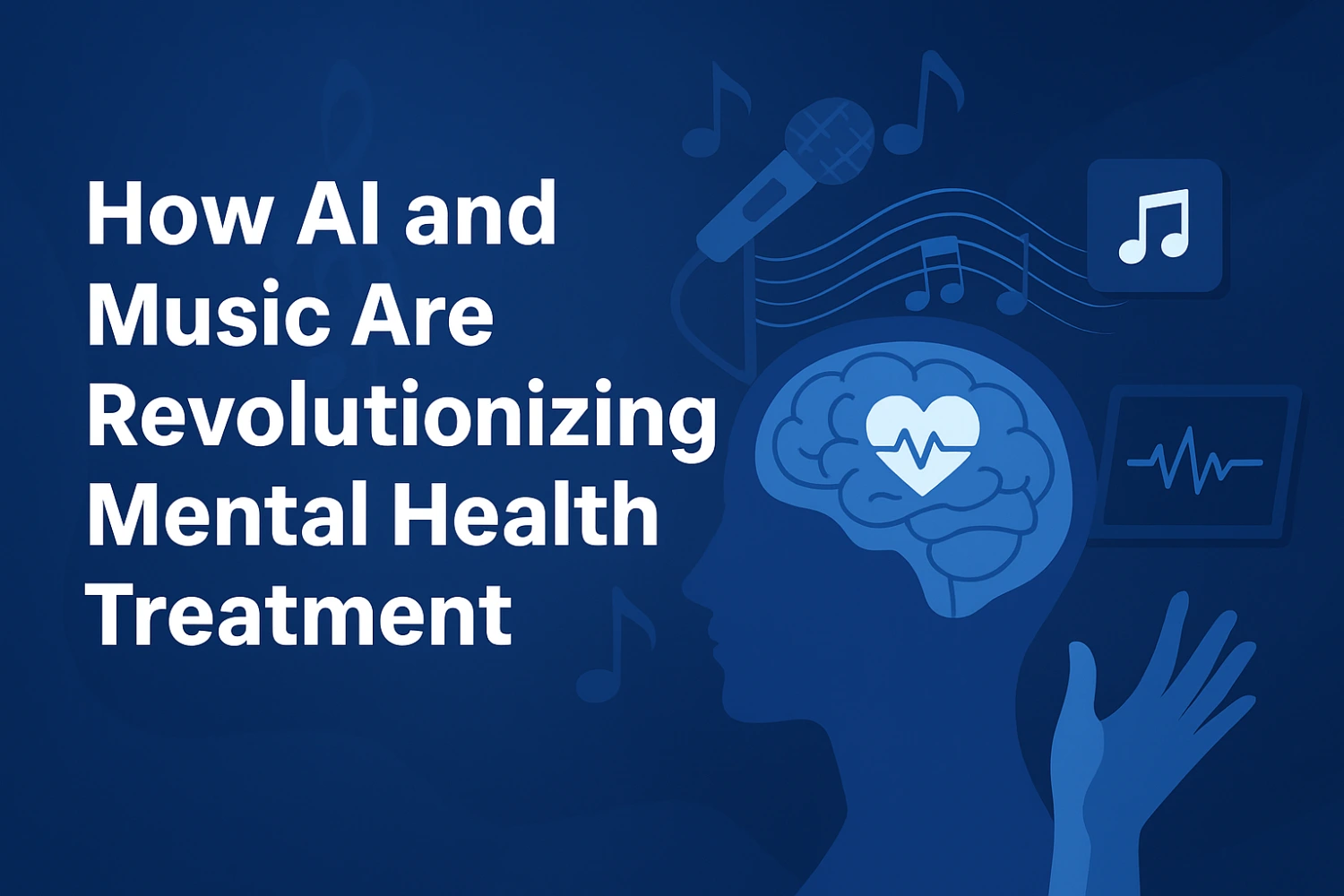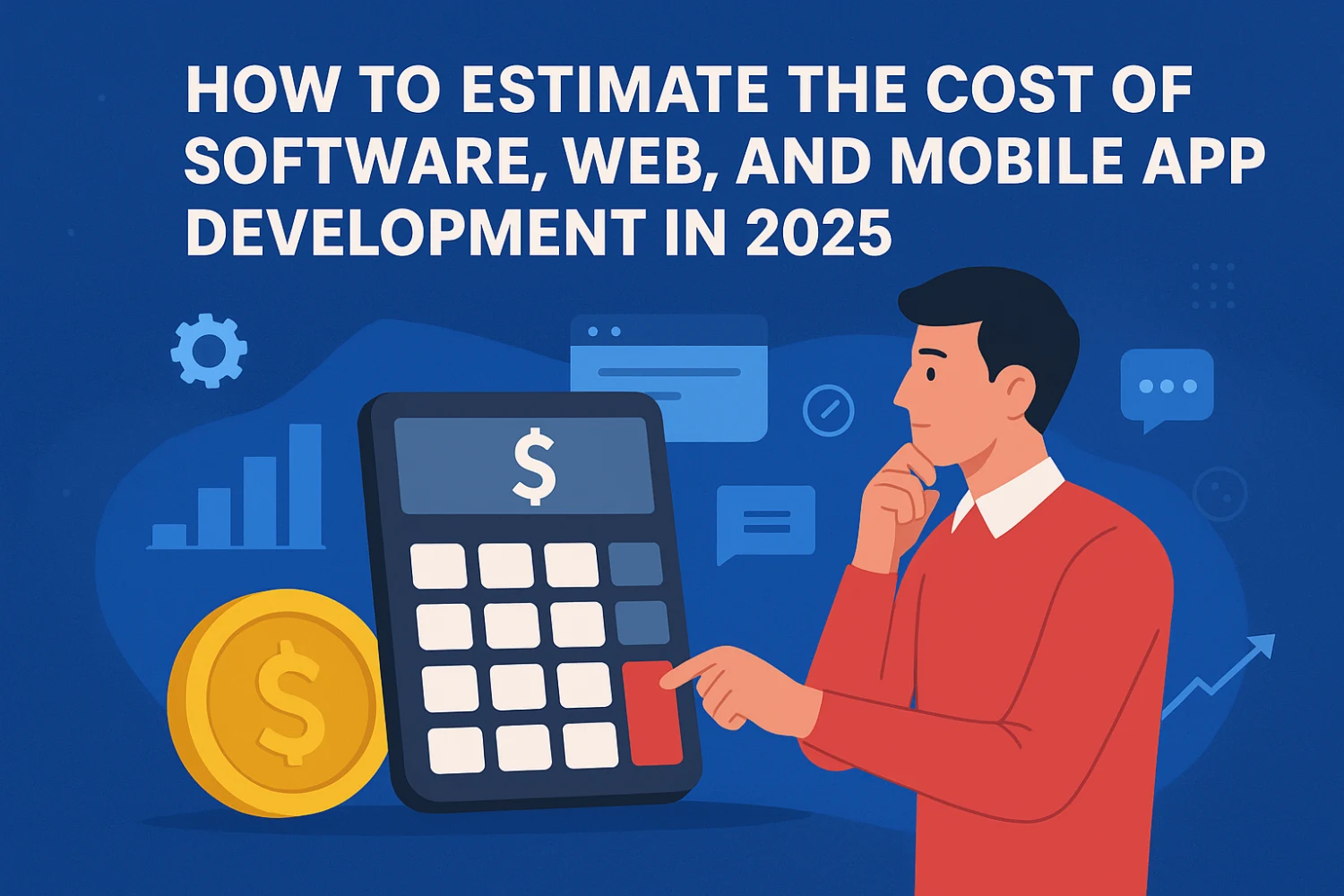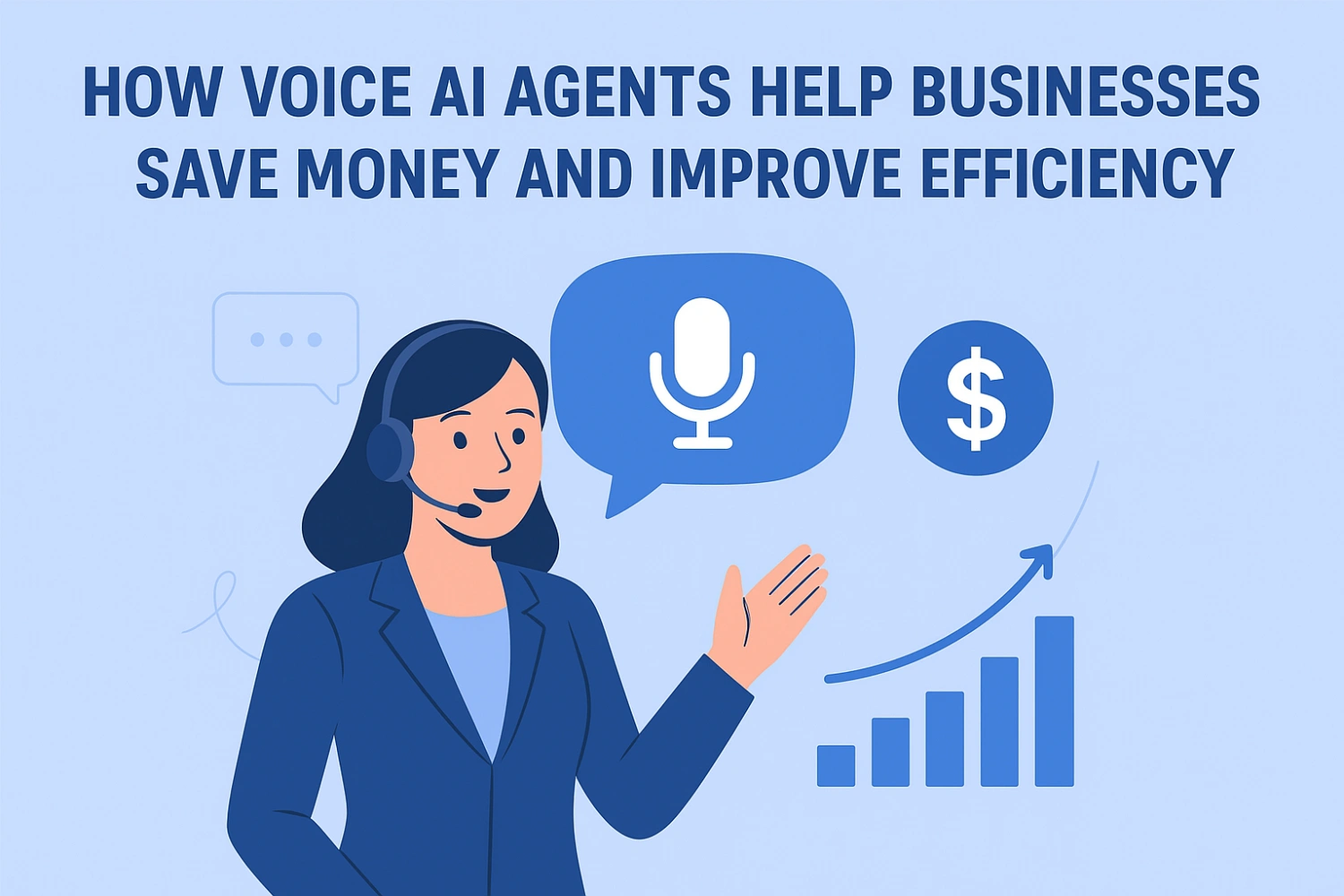Introduction
The AI revolution isn't just about bigger models or flashier demos—it's about making artificial intelligence genuinely reliable, accessible, and practical for real-world applications. In 2025, the gap between AI's potential and its everyday usefulness is narrowing, thanks to groundbreaking research that's tackling the technology's most persistent pain points.
For businesses, developers, and enterprises looking to deploy AI solutions, this represents a pivotal moment. The challenges that once made AI adoption risky—unreliable outputs, computational inefficiency, and difficulty processing complex visual data—are being systematically addressed by a new generation of researchers and innovators.
Recent breakthroughs from the MIT-IBM Watson AI Lab's inaugural summer program showcase exactly what this transformation looks like. Five PhD students, working alongside industry leaders, have developed practical solutions that make AI more trustworthy, faster, and capable of understanding the world in richer ways. Their work isn't just theoretical—it's creating the foundation for AI systems that businesses can actually depend on.
The Trust Problem: Teaching AI When to Doubt Itself
Here's a fundamental question that keeps enterprise AI teams up at night: How do you know when your AI model is about to give you a wrong answer? Traditional approaches to this problem have been crude at best, relying on simple classifiers that flag potentially unreliable outputs. But these safeguards themselves can fail, creating a "who watches the watchers" dilemma.
Enter a revolutionary approach to measuring uncertainty—not just of AI models, but of the systems designed to evaluate them. Researchers have developed a method that peers deeper into how large language models behave, creating smarter probes that understand their own limitations.
How the Breakthrough Works
The innovation centers on training sophisticated neural networks that analyze multiple signals from AI models simultaneously:
- Hidden activation patterns that reveal internal model states
- Sensitivity measurements showing how confident the model truly is
- Out-of-distribution detection identifying when questions fall outside the model's expertise
- Gradient analysis uncovering which inputs confuse the system
But here's what makes this approach game-changing: these probes don't just flag wrong answers—they identify where the training data itself might be mislabeled or inconsistent. For enterprises deploying AI in critical applications like healthcare, finance, or safety systems, this capability is transformative. You're not just catching errors; you're improving the fundamental data quality that determines AI reliability.
This matters especially for specialized AI systems designed to filter harmful content or ensure safe outputs. When your guardrail systems become more precise and self-aware, the entire AI deployment becomes exponentially more trustworthy.
Eliminating Hallucinations: Grounding AI in Real Knowledge
AI models are brilliant conversationalists until they start confidently stating complete fabrications. This "hallucination" problem has been the Achilles' heel of language models, making them unreliable for applications requiring factual accuracy.
The traditional solution? Connect AI models to knowledge bases—structured databases of verified information. But here's where things get complicated: the communication between AI and these knowledge graphs has historically been clunky, expensive, and computationally wasteful.
The Single-Agent Revolution
Imagine replacing a bureaucratic committee with one highly skilled specialist who can work efficiently and make smart decisions. That's essentially what this new framework accomplishes for knowledge-grounded AI.
Instead of complex multi-agent systems passing information through fixed pipelines, researchers developed a streamlined approach using:
- A single reinforcement learning agent that learns through trial and error
- Dynamic API interactions with major knowledge bases like Freebase and Wikidata
- Multi-turn conversations where the agent retrieves exactly what it needs
- Self-optimization balancing accuracy with completeness
The system doesn't just fetch information—it learns which queries yield the most valuable data, how much context is sufficient, and when to stop searching. For businesses building AI applications that require factual grounding—think customer service bots, research assistants, or data analysis tools—this approach dramatically reduces costs while improving reliability.
The transparency is equally valuable. Unlike black-box systems, this framework shows exactly where information comes from and how decisions were made, critical for enterprise compliance and auditing requirements.
Speed Without Sacrifice: Rethinking AI Architecture
Transformers—the architecture powering ChatGPT, Claude, and virtually every modern language model—have a dirty secret: they're computationally expensive and struggle with long documents. As input length doubles, processing costs quadruple. For enterprises processing lengthy contracts, research papers, or customer histories, this limitation translates directly to higher costs and slower responses.
Breaking Through Computational Barriers
New architectural innovations are fundamentally rethinking how AI models process information:
Linear Attention Mechanisms replace the quadratically expensive softmax attention that slows transformers, enabling them to handle dramatically longer sequences without proportional increases in computational cost. This isn't just faster—it's the difference between AI that can process a paragraph versus an entire book.
Dynamic Reflective Positional Encoding solves another subtle but critical limitation. Traditional transformers struggle to track how things change over time within sequences—variable values, evolving narratives, or shifting contexts. The new approach uses mathematically elegant transformations that capture these dynamics while remaining computationally efficient.
What This Means for Real Applications
These advances enable AI models to handle more complex reasoning in fewer steps. Instead of breaking problems into many small pieces—each requiring computation and introducing potential errors—models can now tackle sophisticated subproblems directly.
For businesses, this translates to:
- Faster response times for customer-facing applications
- Lower operational costs with reduced computational requirements
- Better understanding of long documents and complex contexts
- More nuanced reasoning without exponentially increasing processing time
Teaching AI to See: Visual Understanding Through Code
The human brain processes visual information effortlessly—glancing at a chart, we instantly grasp trends, outliers, and relationships. For AI, this remains surprisingly difficult, especially with complex visualizations like business charts, scientific graphs, or design elements.
From Charts to Code: Reverse Engineering Visual Data
One groundbreaking approach tackles chart understanding by thinking in reverse. Instead of teaching AI to "read" charts directly, researchers created a system that generates the code likely used to create the chart in the first place.
The ChartGen pipeline works through elegant simplicity:
- Feed chart images into a vision-language model
- Generate Python code that would recreate the chart
- Iteratively augment code across thousands of examples
- Produce massive datasets—over 200,000 unique chart-code pairs covering 30+ chart types
This synthetic dataset becomes training material for AI models, dramatically improving their ability to understand data visualizations in financial reports, scientific papers, and business dashboards. For enterprises drowning in visual data, this capability transforms AI from a text processor into a true multimodal analyst.
Visual Textures and Design Intelligence
Another innovation takes visual understanding into creative territory—teaching AI to generate realistic textures for CAD applications and digital design through program synthesis.
The system accepts visual descriptions (target images) and iteratively refines Python code to generate matching textures with precise characteristics:
- Luminosity and color accuracy matching real-world materials
- Surface properties like iridescence and reflectivity
- Self-improvement learning from its own generated data
- Practical application for design, manufacturing, and visualization
What's remarkable is the self-supervised learning approach—the system generates training data from its own attempts, continuously improving without requiring massive labeled datasets. For design software, game development, and visual effects, this represents a leap toward AI that genuinely understands visual aesthetics.
The Integrated Vision: AI That Actually Works
When viewed together, these breakthroughs form something larger than the sum of their parts. They address AI's core deployment challenges systematically:
Reliability through uncertainty-aware systems that know their limitations and ground themselves in verified knowledge. Efficiency through architectural innovations that deliver faster, more cost-effective inference. Capability through multimodal understanding that processes visual data as naturally as text.
This isn't hypothetical research destined to gather dust in academic journals. These advances are being integrated into enterprise AI systems right now, making models more robust, practical, and valuable across industries.
From Research to Real-World Impact: How True Value Infosoft Delivers Next-Generation AI
The cutting-edge research emerging from institutions like MIT sets the direction for AI's future, but translating these breakthroughs into practical business solutions requires expertise, integration skills, and strategic vision. This is where True Value Infosoft (TVI) bridges the gap between innovation and implementation.
Our AI Development Philosophy
At TVI, we don't just follow AI trends—we architect solutions using the latest proven methodologies that enhance reliability, efficiency, and capability:
Trustworthy AI Implementation: We integrate advanced uncertainty quantification and knowledge-grounding techniques into our AI solutions, ensuring your applications deliver reliable outputs with explainable decision-making. Whether you're deploying customer-facing chatbots or internal intelligence systems, we build in safeguards that flag potential errors before they impact users.
Optimized Performance Architecture: Drawing from state-of-the-art efficiency research, we design AI systems that maximize value while minimizing computational costs. Our architectures handle complex reasoning tasks, process long-form content, and scale economically—delivering enterprise-grade performance without enterprise-scale infrastructure budgets.
Multimodal Intelligence: Your business data exists in multiple formats—text documents, visual charts, design files, and structured databases. We build AI systems that truly understand this diversity, processing and reasoning across data types to extract insights that single-modality systems miss entirely.
Practical Integration: Advanced AI capabilities mean nothing if they can't integrate with your existing workflows, databases, and business processes. We specialize in seamlessly embedding intelligent systems into your operations, whether that's augmenting existing applications or building entirely new AI-powered products.
End-to-End AI Solutions
From concept validation through deployment and continuous optimization, TVI provides comprehensive AI development services:
- Strategic AI Consulting: Understanding where AI can genuinely transform your business versus where traditional approaches remain superior
- Custom Model Development: Building specialized AI systems tailored to your domain, data, and requirements
- Knowledge Base Integration: Connecting AI to your proprietary data and trusted external sources for grounded, factual outputs
- Visual AI Applications: Developing systems that understand charts, designs, documents, and complex visual information
- Performance Optimization: Ensuring your AI systems remain fast, cost-effective, and scalable as usage grows
- Trust and Safety: Implementing robust monitoring, uncertainty quantification, and safety measures for mission-critical applications
The future of AI isn't just about more powerful models—it's about making AI genuinely useful, reliable, and accessible for real-world applications. The question isn't whether these capabilities will transform your industry—it's whether you'll be leading or following that transformation.
Ready to Build More Intelligent Solutions?
The AI landscape is evolving rapidly, moving from impressive demos toward genuinely dependable enterprise systems. The breakthroughs in trustworthiness, efficiency, and multimodal reasoning aren't future possibilities—they're available capabilities ready for integration into your business applications today.
At True Value Infosoft, we help organizations navigate this transformation strategically. Whether you're looking to enhance existing products with AI capabilities, build new intelligent applications from scratch, or ensure your AI deployments meet enterprise reliability standards, we provide the technical expertise and architectural vision to turn cutting-edge research into practical business value.
Let's explore how advanced AI can solve your specific challenges. Connect with True Value Infosoft today to discuss how we can build more trustworthy, efficient, and capable AI solutions tailored to your needs.
The future of AI is reliable, fast, and genuinely intelligent. The question is whether your organization will harness these capabilities to gain competitive advantage or watch competitors pull ahead.
FAQs
Advanced uncertainty quantification techniques allow AI systems to recognize their own limitations. By analyzing multiple internal signals and measuring confidence levels, modern AI can flag potentially unreliable outputs before they reach users. This self-awareness, combined with knowledge-grounding approaches that verify facts against trusted databases, dramatically reduces errors and hallucinations.
Knowledge graphs provide AI models with access to structured, verified information from trusted sources. When answering queries, AI systems retrieve relevant facts from these databases rather than relying solely on patterns learned during training. Modern reinforcement learning approaches optimize this retrieval process, balancing accuracy with efficiency to deliver grounded, factual responses.
AI processing costs directly impact business viability. Traditional transformer architectures have quadratic computational complexity—doubling input length quadruples processing costs. New linear attention mechanisms and architectural innovations reduce this dramatically, enabling businesses to handle longer documents, more complex reasoning, and higher user volumes without proportionally increasing infrastructure expenses.
Visual AI processes and understands images, charts, designs, and other visual information—not just text. This requires specialized architectures that can parse spatial relationships, recognize patterns, and understand visual semantics. Recent advances use program synthesis and code generation approaches, teaching AI to reverse-engineer the logic behind visual content for deeper understanding.
Many of these techniques are already being integrated into enterprise AI platforms and frameworks. With experienced development partners, businesses can implement trustworthy, efficient AI systems in weeks or months rather than years. The timeline depends on application complexity and integration requirements, but the technology is mature enough for production deployment today.





